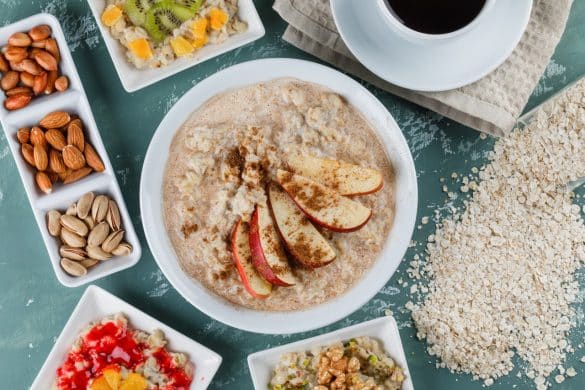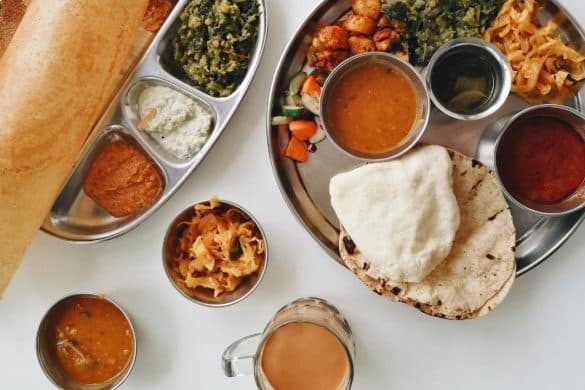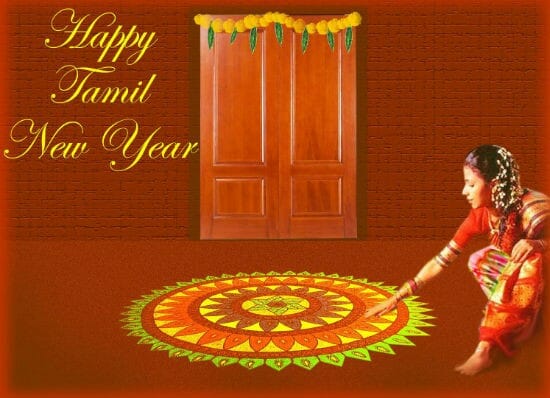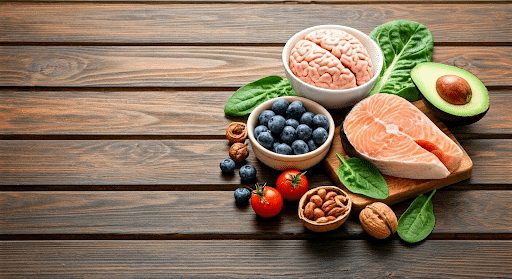Indian culture is deeply rooted in traditions and customs passed down for centuries. One of the unique aspects of Indian culture is fasting, which has profoundly influenced food choices and preparation throughout the years. From religious observances to physical health benefits, fasting plays a vital role in Indian life. In this article, we’ll explore the significance of fasting in Indian culture and how it shapes food choices and preparation.
Fasting isn’t just practiced during special occasions or festivals but also as part of daily routine. Fasting can be done for spiritual reasons, such as honoring a deity or seeking forgiveness from God. Still, many people fast for health reasons too. It’s believed that abstaining from certain foods helps cleanse the body, boost immunity, and eliminate toxins. Whatever their motivation, Indians take great pride in observing these rituals with discipline and devotion.
Food choices vary greatly depending on which type of fast someone chooses – partial or complete abstinence from specific foods is common practice when fasting. Traditional meals tend to include simple dishes like khichdi (a dish made with rice), dal (lentil curry), roti (flat bread), and other vegetarian items that are lighter on digestion than meat-based dishes. This reflects the importance placed upon preserving energy while fasting so one can focus more intently on worship or purification practices instead of being bogged down by heavier meals.
Definition Of Fasting
Fasting is like a cloak of spiritual protection draped over Indian culture. It is defined as voluntary abstaining from food or drink for religious purposes. Indian tradition has a long-standing history that influences food choices and preparation. Fasting is an integral part of many religions in India, and this custom has been followed since ancient times when Vedic rituals were practiced.
The purpose behind fasting varies according to different beliefs; Hindus fast on certain days to purify their soul, and Muslims do so during Ramadan to cleanse themselves spiritually. At the same time, Jains practice strict austerity by abstaining from all forms of food and drink. The type of food consumed also differs amongst these religions: some Hindus eat only fruits for religious observance, whereas Jains refrain from eating root vegetables such as potatoes, onions, garlic, etc., due to their belief system. In addition, other customs associated with fasting include wearing white clothes or avoiding physical contact with others.
Regardless of the religion people follow or why they choose to fast, one thing remains constant – fasting plays a vital role in Indian culture by influencing its food choices and methods of cooking. As traditional dishes vary between regions within India, so does the significance attached to them based on local customs surrounding fasting practices. Moving onto the next section about ‘history and roots in India,’ it’s clear that this topic holds great importance throughout centuries of cultural heritage in India.
History And Roots In India
Fasting in Indian culture has deep roots, with evidence of its practice stretching back thousands of years. Ancient texts such as the Vedic scriptures and epic Mahabharata mention fasting customs still observed today. Indian fasting rituals have been closely associated with religious practices, especially Hinduism and Jainism. These two religions strongly emphasize spiritual purification through controlled eating habits, including abstaining from certain foods or adhering to specific dietary restrictions during festivals or holidays.
The traditional fasting customs in India also vary depending on region and community. In South India, for example, Nombu is an important annual festival where devotees observe fasts for several days. Similarly, North Indians celebrate Karwa Chauth—a day when married women fast until the moon rises—as a symbol of conjugal love and commitment to their husbands. Other popular forms of fasting include Navratri, Ekadashi Vrata, Poornima Upvaas (full-moon fast), partial fasts like Monday/Thursday diets, etc.
In addition to religious observances, many Hindus believe regular fasting can promote physical health by reducing toxins and aiding digestion. During these periods of abstinence from food, some individuals may choose to consume only simple meals made with sacred or auspicious ingredients according to ancient Ayurvedic principles. Fasts like upwas involve consuming grains like sabudana (tapioca) and fruits and vegetables prepared in ghee (clarified butter) and fruits and vegetables. Such mindful attention given to what we eat extends beyond mere sustenance; it is a powerful reminder of the interconnectedness between our bodies and minds that venerates life.
Beliefs Surrounding Fasting
Beliefs surrounding fasting in Indian culture are profoundly spiritual and religious. Fasting is seen as a symbol of purification, both physically and spiritually. It’s believed that by abstaining from food, one can cleanse the body of toxins while paying homage to their faith with offerings of prayer and devotion. This act of restraint allows individuals to demonstrate their commitment to higher power and understanding of life beyond material possessions or earthly needs.
Fasting is about denying oneself pleasures such as food and re-engaging with the self, allowing for reflection on what matters in life – humility, compassion, morality, and charity towards others – all values that make up an essential part of Indian culture. In this way, fasting brings people together in solidarity through shared beliefs, rituals, and morals, which strengthens communities across India.
The symbolism behind fasting resonates throughout Indian customs, creating a sense of connection between past, present and future generations. Therefore, fasting serves many purposes: from cleansing the soul to connecting people physically, mentally, and emotionally. With these deep-rooted beliefs firmly embedded within tradition comes respect for its significance, passed down through generations over centuries.
Dietary Restrictions During Fasts
India’s ancient fasting culture is deeply ingrained in the local customs and beliefs. Most Indian fasts involve some form of dietary restriction, often to abstain from certain foods or food groups. During a fast, people may consume only fruits and vegetables, dairy products, grains, or no solid food. Here are four common dietary restrictions during an Indian fast:
- Fasting on water alone – This involves consuming only water for the duration of the fast.
- Eating light meals – People participating in this type of fast will eat either one main meal per day or several smaller meals throughout the day that have been prepared without any added oils, spices, condiments, or masalas (herbs).
- Abstaining from non-vegetarian dishes – Many Hindu festivals involve abstaining from meat and fish consumption as part of their fasting rituals.
- Not eating processed or deep-fried foods – Indians who observe religious fasts usually restrict themselves from having snacks such as chips, pakoras (fritters), samosas(fried pastries), etc., which are commonly associated with “comfort food” indulgences in India.
In addition to these dietary restrictions during fasting periods, many Indians also practice traditional food preparation techniques that help maintain health by ensuring maximum nutrient absorption into the body while minimizing the caloric intake associated with deep frying and other unhealthy cooking methods. These practices include steaming instead of boiling vegetables; using homegrown ingredients whenever possible; avoiding artificial additives like MSG; using minimal amounts of oil when preparing dishes; using organic herbs and spices that promote digestion; and so on. By incorporating these healthy habits into their daily lives, even beyond fasting times, many Indians enjoy greater overall wellness due to improved nutrition levels across different life stages. This has enabled them to stay physically fit and spiritually connected with their faith tradition through generations.
Traditional Food Preparation Techniques
Traditional food preparation techniques are integral to Indian culture, especially regarding fasting. From cooking and preparing unique dishes for religious festivals such as Diwali or Holi to observe fasts during auspicious days like Navratri or Janmashtami – the traditional cooking methods in India differ significantly from the modern way of preparing meals.
The most common traditional technique is slow-cooking over a low flame, where all ingredients – including spices, herbs, vegetables, and meats – are cooked together until they reach perfection. This method allows flavors to develop further as time passes, creating delicious and aromatic curries that many Indians worldwide love. In addition to this, steaming is another popular traditional technique used in Indian cuisine; this includes making idlis (rice cakes), vadas (doughnuts), and even rasam (a type of soup).
Finally, another age-old practice still followed today involves grinding various grains into flour with a mortar and pestle. This is then made into the dough before being shaped into chapatis (flatbreads) that can be served with any meal. All these traditional methods have been passed down through generations and continue to shape Indian food culture. They provide insight into how fasting influences food choices and preparation in India’s diverse culinary landscape.
Rites And Rituals Associated With Fasting
In Indian culture, fasting is essential to religious and spiritual practices. There are a variety of rites and rituals associated with fasting that has been passed down through generations. These traditions include special ceremonies, observances, prayers, and offerings related to fasting.
Fasting rites often involve abstaining from certain foods or beverages to attain higher consciousness or spirituality. It can also be used as a form of devotion for religious figures such as gods, goddesses, or saints. Many religions also use it to seek forgiveness from God or receive blessings from Him. Fasting rituals vary by faith and region. Some common elements include: chanting mantras (sacred words), offering fruits and flowers at shrines, burning incense sticks, lighting diyas (lamps), and praying for health and prosperity.
These fasting ceremonies aim to show respect for deities or holy beings while seeking their divine grace. They also remind us about the importance of discipline in one’s life. By engaging in these traditional activities regularly, people gain emotional balance, which helps them make wise decisions regarding food choices and preparation throughout the year.
These fasting ceremonies allow individuals to connect spiritually with their inner selves while developing a greater appreciation for healthy eating habits, ultimately leading to better physical health in the long run. As such, they are essential in reinforcing positive attitudes towards nutrition among Indians across all social strata today.
Frequently Asked Questions
What Are The Health Benefits Of Fasting?
Fasting has been a part of Indian culture for centuries and is still practiced today. According to the World Health Organization, almost half of India’s population (47%) fast on religious or cultural occasions. While various forms of fasting exist in different parts of the country, it has become an essential part of traditional life, primarily as numerous health benefits are associated with it.
One such benefit is weight loss. Fasting helps reduce calorie intake, which can lead to shedding excess kilos. It may also improve insulin sensitivity and help control blood sugar levels, enhance mental clarity and focus, increase energy levels, reduce inflammation, and boost immunity. Moreover, depending on the fast being undertaken – from short-term water fasts lasting up to 24 hours to longer intermittent fasting cycles – individuals can choose how much time they want to dedicate each day toward their overall well-being.
However, regardless of what kind of fast one embarks upon, adhering to certain taboos during this period is essential for achieving optimal benefits. For example, avoiding fried and processed foods that contain unhealthy fats and additives; abstaining from sugary snacks or beverages; limiting caffeine consumption; not eating after sunset; preparing meals without onions or garlic; drinking plenty of fluids such as warm water throughout the day; practicing mindful eating when breaking a fast – all these practices could go a long way in improving health outcomes over time. In addition to following specific dietary guidelines while observing a fast, it is also possible to combine traditional remedies like herbal teas into one’s routine and incorporate yoga or other physical exercises into a daily regimen if desired.
Overall, by understanding the significant role of fasting in Indian culture and its potential impact on food choices and preparation within this context – including its associated health benefits – people can make more informed decisions about what works best for them individually when considering any diet changes in the future.
Are There Any Special Foods Eaten On Fasting Days?
Are there any particular foods eaten on fasting days? Fasting is a significant part of Indian culture and is essential to food choices and preparation. During fasts, certain types of food are typically consumed to adhere to religious or spiritual beliefs. Depending on the kind of fast being observed, different dishes may be made with specific ingredients or combinations of flavors.
In India, many Hindu festivals involve fasting for one day before eating the next day again. These days, people often prepare traditional recipes consisting of grains like wheat, millet, rice, or pulses such as mung beans. They also incorporate unique ingredients such as rock salt, ghee, or curd into their meals. These special ingredients provide essential vitamins and minerals while adhering to religious restrictions. Other common fasting foods include fruits and vegetables like potatoes, cauliflower, carrots, and bananas, which can be cooked in various Indian dishes like sabzis (vegetable curry) for added flavor.
Some popular desserts are prepared only during fasting days, such as shrikhand (a sweet yogurt dish), malpua (sweet pancakes), and kheer (rice pudding). All these dishes have become synonymous with Indian culture due to their popularity among Hindus, who observe regular fasts throughout the year for religious purposes. By using unique recipes incorporating indigenous ingredients, Indians ensure they follow both dietary requirements set by religion while still enjoying delicious home-cooked meals.
Fasting has been part of Indian culture for centuries. It continues to shape how Indians approach food choices and preparation today. Through special recipes involving unique spices and native ingredients, Indians honor religious traditions while ensuring the meals they eat remain nutritious yet flavorful at the same time!
How Often Is Fasting Practiced In India?
Fasting is popular in India, but how often does it occur?
To begin with, let’s look at some key facts about fasting in India:
- Frequency: Fasting occurs regularly across India, according to religious holidays or holy days observed by each faith tradition. The most common fasts occur during Hindu festivals like Navratri and Maha Shivaratri. At the same time, Muslims may observe Ramadan, and Sikhs can keep Vaisakhi.
- Prevalence: Despite regional differences in the availability of food and income levels which may affect the frequency of fasting in certain areas, overall, there appear to be high participation rates among Indians regardless of their socio-economic backgrounds.
- Rituals: Different religions have different practices related to fasting; for instance, Hindus are more likely to restrict themselves from grains and pulses, whereas Jains abstain from all edible plants, including roots and fruits. Some traditions also involve abstaining from drinking water on specific days.
These varied religious customs mean fasting has become an integral part of life for many people in India. It is clear then that its prevalence extends beyond just one religion or region – it’s an important cultural phenomenon that influences food choices and preparation throughout much of the country. From dairy products consumed before sunset during Ramadan to unique dishes cooked only on particular festival days – understanding the ritualistic aspect of fasting helps us appreciate how majorly it shapes dietary habits in India.
How Does Fasting In India Differ From Fasting In Other Cultures?
Fasting is an effective practice in many cultures worldwide, and India is no exception. For example, take Roshni Patel: she fasts on Hindu holidays like Dusshera to honor her faith. But how does fasting in India differ from other cultures?
When investigating cultural differences between fasting traditions worldwide, one can quickly note that each country has its own religious and social values associated with them. In India specifically, fasting serves various purposes beyond just honoring God or respecting tradition; it is also believed to bring purity of mind and body. Generally speaking, these rituals often involve abstaining from certain types of food or activities for a period determined by personal preference or religious obligation. Furthermore, during important festivals such as Diwali and Holi, more elaborate customs involve specific foods prepared only for special occasions.
Although some countries have similar concepts about fasting -such as Lent in Catholicism- others do not observe any ritualistic abstinence. Even among those who do follow similar customs, there may be variations in duration or even the type of foods allowed depending on the religion practiced (e.g., veganism). Moreover, what is considered acceptable behavior while fasting might also vary from culture to culture – for instance, some places might forbid drinking alcohol. In contrast, others don’t see an issue with having a glass of wine here and there throughout their observance period.
Overall then, when comparing different approaches to fasting across cultures, one must consider religious beliefs as well as social norms regarding dieting regimes:
- Fasting in India typically involves abstention from the consumption of animal products or grains/cereals;
- Other religions may require abstention from meat but allow dairy;
- Some faiths will permit eating fish during times of prayerful reflection;
- Whereas still, others have no restrictions whatsoever on food intake during designated periods of spiritual contemplation.
It is clear that although much remains consistent amongst traditional methods used for observing days off work or worship services worldwide – including within India itself – there remain subtle yet meaningful distinctions between these practices which serve to distinguish particular cultural identities while simultaneously uniting us under our shared human experience.
Are There Cultural Taboos Associated With Fasting?
When discussing fasting in Indian culture, cultural taboos must be considered. Fasting is an integral part of many religions and cultures around the world. Still, certain traditions may vary from one to another. In India, these taboos can profoundly impact food choices and preparation when it comes to observing fasts.
For instance, depending on the type of fast being observed, some foods may not be allowed due to religious restrictions or other beliefs. This could mean abstaining from specific ingredients like meat or dairy products for those who observe vegetarian diets during such times. Alternatively, some individuals might cook dishes without onions or garlic if they adhere to stricter fasting customs.
Furthermore, different types of fasts require unique preparations as well. For example, some people prefer drinking only milk during their observances, which means extra care must be taken to ensure its cleanliness before consumption. Similarly, ingredients used for preparing savory meals will also need special attention since flavors often differ depending on what kind of fast one is undergoing.
In summary, understanding cultural taboos associated with fasting in India can help us gain insight into how food choices and preparation change according to the various kinds of fasts practiced in this country. This knowledge can provide valuable information about why particular preferences exist among individuals who adhere to specific customs while observing them.
Conclusion
Fasting in India is a powerful symbol of sacrifice, devotion, and self-discipline. It has been part of Indian culture for centuries, influencing food choices and preparation. Fasting provides physical health benefits such as improved digestion, reduced risk of chronic disease, and increased energy levels. Mental benefits come from abstaining from certain foods during fasting days – heightened awareness, greater focus, and control over one’s thoughts and feelings.
For many Indians, fasting is more than just an act of abstinence; it’s a ritualistic expression of faith or devotion to their religion. Through fasting, we can learn how to practice moderation and appreciate our daily blessings even more. This ancient tradition holds immense spiritual importance for those who observe it regularly.
By understanding the cultural significance behind fasting in India, we can gain insight into its profound effect on individuals’ lives and diets. While the customs surrounding fasting may differ between cultures, the core values remain the same: respect for oneself and others, gratitude for what we have, and dedication to our beliefs.













